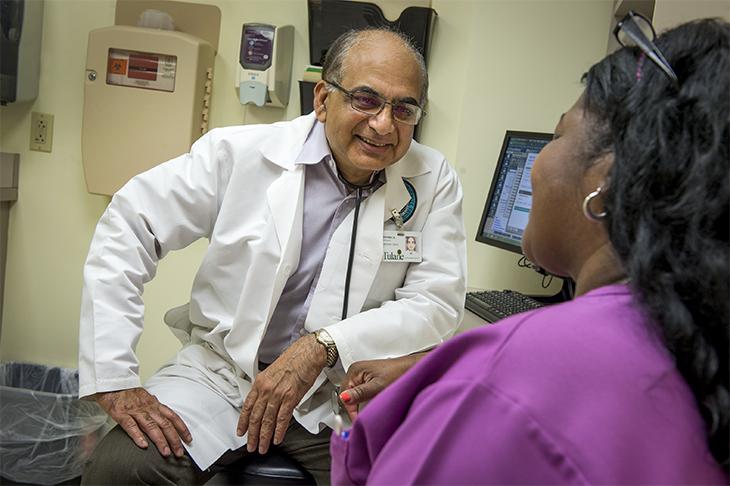Charting the future of diabetes treatments
When the American Diabetes Association (ADA) meets in New Orleans in June, one of the highlights will be the presentation of a 12,000-person, international study that looks at the effects of a diabetes drug on cardiovascular health. Statistics from the ADA show that more than 70 percent of diabetics have high blood pressure, and they are at higher risk of heart attack and stroke.
Renowned diabetes specialist Dr. Vivian Fonseca is excited to learn the results of this study, since he participated in it. The Tulane University professor of medicine and chief of the endocrinology section holds the Tullis–Tulane Alumni Chair in Diabetes at Tulane School of Medicine.
The latest study is one of a number of projects the longtime researcher is involved in, including ones that focus on new medicines and blood glucose regulation. He and his colleagues also are investigating the use of electronic medical records to help patients better manage their health, translating diabetes research into more effective patient care and improving patient education about diet and exercise.
“Amputation rates are down by maybe 50 percent. Blindness, kidney failure—all down very dramatically.”
Dr. Vivian Fonseca
Even though the ADA estimates that more than 29 million Americans have diabetes, there is some good news to report: Fonseca says late-stage complications are less common today than 20 years ago.
“Amputation rates are down by maybe 50 percent,” Fonseca says. “Blindness, kidney failure — all down very dramatically, but the total number of people with [diabetes] still continues to be high.”
The ADA estimates that 8 million people have diabetes but don’t know it, and as many as another 86 million Americans have prediabetes, a condition that can be reversed.
Preaching the diet-and-exercise message continues to be a challenge, Fonseca says. “That’s really what we need to focus on as a society in the general population: preventing the progression to diabetes. Once you’ve got diabetes it keeps progressing. It’s easier to treat from my perspective in that I have more tools, but it’s more complicated for the patient because they have to take so many medicines.”

